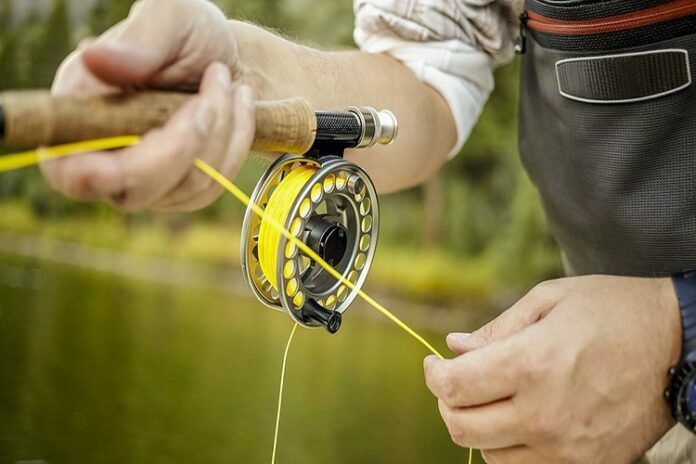If you’re just beginning on your fly fishing journey, one of the most important aspects for you to learn about is your fly fishing reel. Fly reels generally play a more behind-the-scenes role, and “hold the line” for you without seeming to be doing too much. However, if you’re fishing for stronger and larger fish like bonefish, tarpon, steelhead, or other saltwater species, it’s crucial to have a quality fly reel as fish might be yanking out yards of line every moment or pivot towards the angler requiring a rapid gathering of the line. Before you begin your fly fishing reels purchase, it’s important to do your research and learn about production methods and types of fly reels so you can ensure you’re getting the one most suited to your needs.
Table of Contents
Fly Reel Production
When it comes to fly reel production, there are two main ways that fly reels are manufactured. The first of these is through CNC Machining. Many higher-end fly reels are created through this process, and it entails using computerized numerical control machining of aerospace-grade aluminum. The parts are then covered with a solution that prevents corrosion when coming into contact with saltwater. Flywheels which are made through CNC machining are lightweight and durable, making them on the more expensive end of the spectrum, but also means that with regular care and maintenance they will last much longer than your average reel.
The other means of producing fly reels is through die-cast methods. This method is generally used for less expensive reels and involves pouring or injecting molten alloy into a mold. This method was popularized in the 20th century and allows manufacturers to create reel forms that would be impossible to make with the machining process. One of the drawbacks however is that they are less durable and can shatter if dropped from a height onto a hard surface.
Reel Size
In terms of choosing the appropriate reel size, it’s important to take into account balance and ensure that your reel has the appropriate capacity for your fly line and backing. The balance of the loaded reel should fit in hand and feel light, with no tip heavy feel. It’s also important to take into account your hand size and personal preference. For example, smaller hands with larger reels can be cumbersome to maneuver.
Spool Design
Historically, fly reels would come equipped with a spool that was designed to be replaced. When necessary, the whole spool would be removed and replaced, with the spool generally costing around half as much as the reel. With advancements in design technology, a new take on spool replacement has been developed with the cassette or cartridge reel. With this design, a plastic spool is located in the frame which can be fitted into the frame in the same way a regular spool would.
Fly Fishing Species
Before getting into the different types of reel design, it’s important to first consider what type of species you’ll be fishing for. If you’re salmon fishing, for example, your reel will need the capacity for a speycasting line, along with enough backing. In contrast, reels for river trout or grayling only require a click and pawl check. Additionally, if you’re saltwater fishing, you’ll need something that is highly resistant to corrosion along with a reliable disc drag system. Make sure before you purchase that you have a good grasp on what type of species you’re looking to fish for, and do some research around the specific recommendations for fly reels with that context in mind.
Reel Design
While there are several types of fly reels on the market for purchase, we’ve listed the 3 main designs below. Each of them is designed for a particular use, so make sure you get the one that matches the type of fishing you’re looking to do!
Standard Arbor Fly Reels: This design is highly favored by anglers using smaller river rods and cane fly rods because they hold plenty of backing and the fly line is put on the reel in very small coils which reduces the retrieval rate per revolution. Drawbacks of this reel are that frames are often quite narrow and they make for poor line storage given that the line is more likely to suffer from coil memory given how tight it’s stored.
Mid Arbor Fly Reels: These reels have a larger capacity for backing, and lines are kept in larger loops than on the standard arbor reels, reducing the chance for coil memory. With this design, the base of the reel is slightly removed from the middle spindle, and the reel is wider.
Larger Arbor Fly Reels: These are the largest and most modern reels of the 3 listed, and are bigger in both diameter and design. The increased size allows for reduced line memory, great backing capacity, and quick retrieval rates. The reels are heavily machine designed to reduce the weight so that the balance of the rod is not impacted, however many find the size of this design to be too large to the rod comparatively, even if the balance isn’t an issue.









